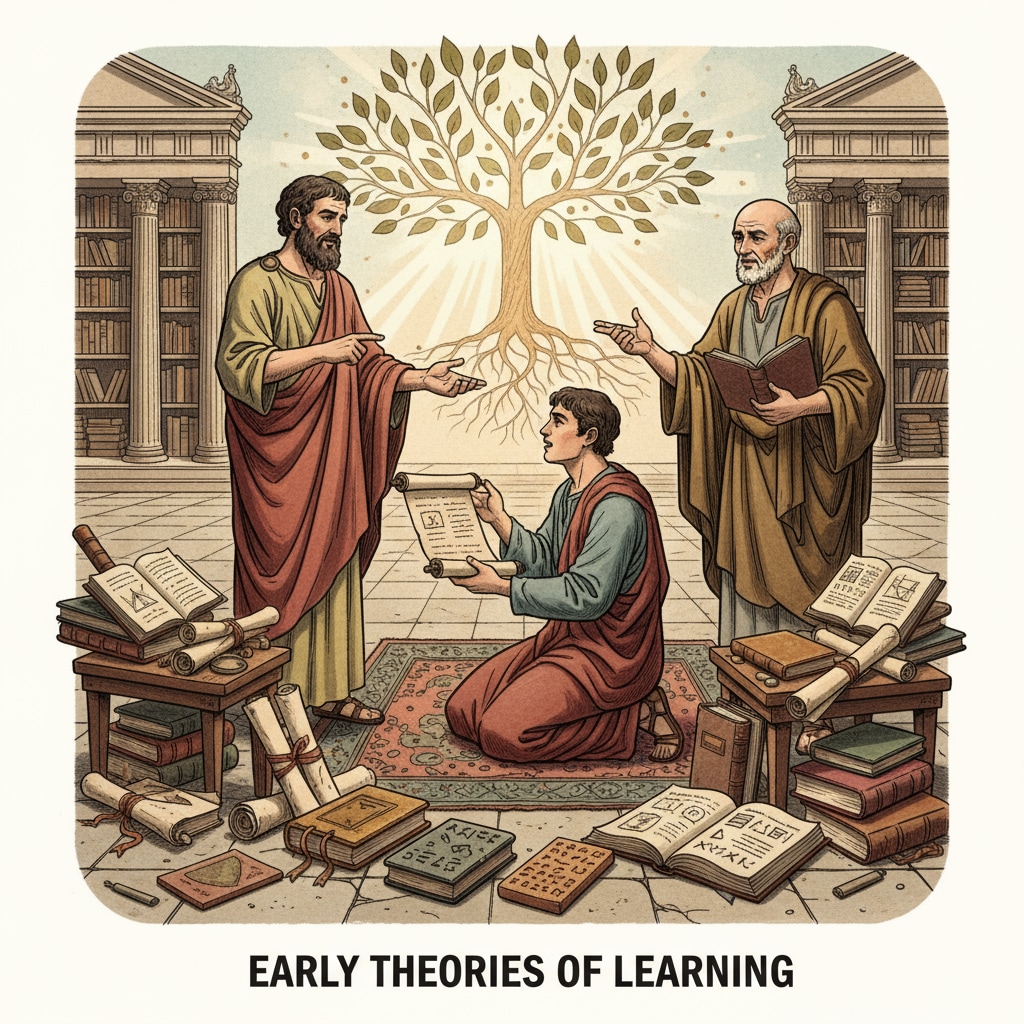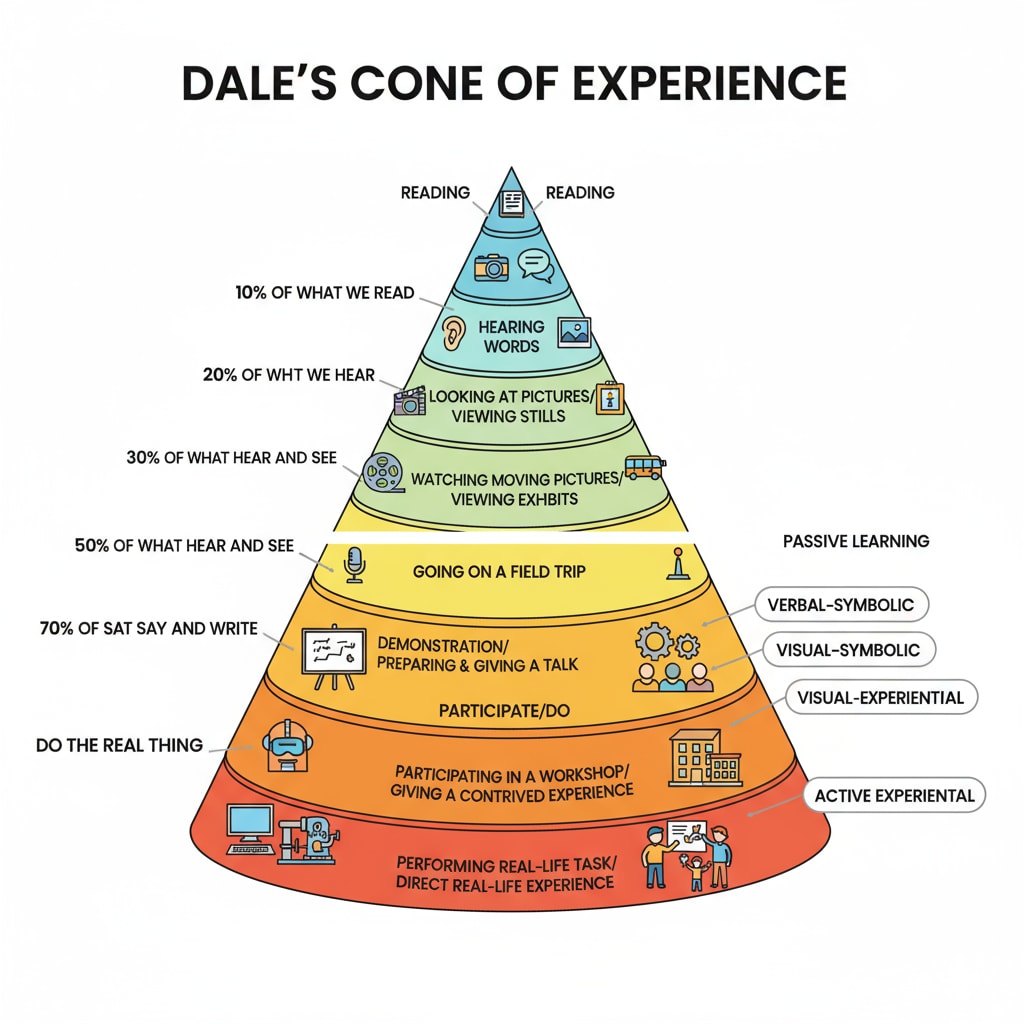Learning hierarchy, sensory experience, and learning by doing have long been integral aspects of educational theories. Throughout history, thinkers have delved into how we learn most effectively, and the concept of learning by doing has emerged as a powerful approach. From the ancient wisdom of Xun Kuang to the modern insights of Edgar Dale, this idea has withstood the test of time.

The Ancient Roots of “Learning by Doing”
Xun Kuang, an important Confucian philosopher in ancient China, emphasized the importance of action in learning. He believed that true knowledge is not just about memorizing facts but also about applying them in real-life situations. For example, one may study the principles of agriculture, but only by actually farming can one truly understand the nuances and difficulties involved. Xun Kuang’s teachings laid the foundation for the idea that hands-on experience is crucial in the learning process. Xun Kuang on Wikipedia
Dale’s Cone of Experience
In modern times, Edgar Dale’s Cone of Experience has had a profound impact on educational thinking. Dale proposed a hierarchy of learning experiences, with the most effective learning occurring at the bottom of the cone, which involves “learning by doing.” This includes activities such as direct purposeful experiences, where learners engage in real tasks and gain practical knowledge. For instance, students learning about electricity by building a simple circuit. Dale’s Cone of Experience on Britannica

The role of sensory experience in learning is also highlighted in Dale’s theory. The more senses that are engaged during the learning process, the deeper the learning. When students build a circuit, they not only see the components and the flow of electricity but also feel the connection and hear the sounds associated with it. This multi-sensory engagement enhances understanding.
When we look at contemporary K12 education, the concept of learning by doing is still relevant. However, there are challenges in fully implementing it. Many classrooms are still dominated by traditional teaching methods that focus on rote memorization rather than hands-on activities. To truly achieve meaningful learning experiences, educators need to incorporate more opportunities for students to learn by doing, engaging multiple senses in the process.
Readability guidance: The article uses short paragraphs to present ideas clearly. The subheadings break down the content into manageable parts. Examples are provided to illustrate key points, and external links offer further exploration. Transition words like “however” and “for example” help to connect ideas smoothly.


